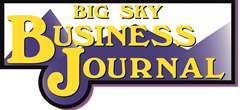Encode Corporation, 111 Florine Ln, 59101, 245-2520, Daniel Massey, service
Caramel Cookie LLC, dba Caramel Cookie Waffle Co., 1707 17th St, 59102, 252-1960, Katie Edwards/erin Heringer/Lilly Thompson, restaurants
Basecamp Billings, 5179 midland Rd, 59101, 259-7777, Taia Hokanson, retail sales
Della Aldrich Logistik LLC, 2220 St Johns Ave D23, 59102, 971-350-5267, Christy Arminger, service
Thomas Mahon, 2690 Fly Creek Rd, Pompeys Pillar, 59064, 307-240-0875, Thomas Mahon, service
Swetky Welding and Construction, LLC, 32 A Longhorn Dr, Columbus 59019, 720-660-5211, Timothy Swetky, general contractors,
BCM Inc, 110 N 400 E, Providence UT 84332, 435-757-6500, Brandon Mortenson, electrical contractors
SDH Design LLC, 2814 Lewis Ave, 59102, 698-5442, Steven Hergett, service
Bright and Beautiful Cleaning, 1140 Alderson Ave, 59102, 855-1699, Janisha Green, service
Daly Landscape, 111 ½ N 19, 59101, 794-2362, Troy Daly, service
Raven Utilities LLC, 2730 W 83rd St, Odessa TX 79764, 903-521-0747, service
Yoga Reiki and Healings LLC, 2603 Arnold Ln, 59102, 696-8382, service
LA Perle Construction G.C., 1536 Rockets Way #1, 59106, 671-4398, general contractors
Evolutions Dancesport 712 Carbon St – Ste A, 59102, 595-8424, Summer Duvall, service
Cypress NW LLC, 38106 N 27th Ave, Phoenix AZ 85086, 503-201-7689, Alan Schindler, general contractors
Winsome Therapy Clinic LLC, 1215 24th St W, 59102, 901-5000, Lidiane Kerr, service
McGough Montana Construction LLC, 2737 Fairview Ave N, St Paul MN, 621-633-5050, McGough Montana Construction LLC, general contractors
Rock Creek Drywall & Paint, 77 Granite Rd, Joliet 59041, 876-4722, Antonio Donez, service
Hidden Gem Property Rentals, 621 Sapphire Ln, 672-6060, Kama Morast, real estate rentals
Dan’s Electric, 99 Tree Line Lane, Bozeman 59718, 209-0099, Dan Nitsche, electrical contractor
Gohl Rentals, 1640 Walter Creek Blvd, 59102, 855-9011, Gloria Gohl, real estate rentals
E&P Remodeling Construction, 3404 Old Hardin Rd, 59101, 860-2245, Emma Rae Plain Feather, service
Moe’s Smoke Shop Inc, 1219 N27th St, 59101, 612-701-4816, Mohammed WazWaz, retail sales
Rimrock Ix LLC dba Rimrock Used automotive, 2951 King Ave W, 59102, 655-8600, Shahzad Latif/Steven Zabawa, auto business
Treasured Package LLC, 5631Mountain Front Ave, 59106, 775-360-8948, Susan & William Dannenberg, retail sales
Pentex Builders LLC, 1494 W Ustick Rd – Ste 120, Meridian ID 83646, 208-600-9181, Ben Dance, service
Freedom Fried, 3455 Old Hardin Rd, #13, 59101, 861-3342, Ashley burling, restaurants
CAH Lodging, 2004 Pine ST, 59101, 672-1271, Chris Hirt, real estate rental
Ziply wireless LLC, 135 Lake St S – Ste 155, Kirkland WA 98033, 866-699-4759, service
Ziply Fiber Pacific LLC, 135 Lake St S – Ste 155, Kirkland WA 98033, 866-699-4759, service
The Sprinkler Dude LLC, 1936 Columbine Dr, 59105, 876-0641, Rory Birkett, service
Add Fine finish, 1836 Timber Tracts Rd, Lewistown 59457, 366-0256, Andrew Dauch, general contractors
Petes Inc, 2407 Harve Ave, Missoula 59801, 543-3086, Eric Petersen. Electrical contractors
Daddy Wrapped, 2007 Bench Blvd, 59105, 606-0757, Cora Howell, retail sales
Sweet Spotz, PO Box 123, Columbus 59019, 290-4344, Kevin and Cristy Shaughnessy, restaurants
McGiver & CO. LLC, 30 N Gould St – STE R, Sheridan WY 82801, 409-3630, Lorie Mciver, service
Caudill Trucking LLC dba Caudill Forestry Services, 4650 Box Canyon Springs RD, 59101, 493-5817, Cody Caudill, service
Fisher Tile & Remodeling LLC, 115 Foster Ln, 59101, 860-2257, Jacob Fisher, general contractors
Lost Texan Pit BBQ, 4020 Buffalo Trail Rd, Molt 59057, 940-5184, John Bunting, restaurants
GM Consulting Inc., 304 Eastlake Circle, 59105, 698-8626, Roger Huebner, service
Exigent Consulting Group LLC dba Summit Peak Medic, 4846 Cedar Ridge Circle, 59106, 206-7100, Jackie Worstell, service
Case by Case Handyman Services, 4410 Altay Dr – Unit 201, 59106, 894-8087, Dylan Case, general contractors
Jazmins Grooms and Designs, 706 Central Ave, 59102, 694-9047, Jazmin Oberg, service
Comet Air Duct Cleaning Inc, 2137 Santiago Blvd, 59101, 321-1504, Gary Harstad, service
Jess’s Cleaning, 1229 Avenue F, 59102, 307-620-1569, Jessica Strang, service
Spicy Skincare LLC, 1423 38th St W, 59102, 969-2018, Nicole Sekora, retail sales
Crav, 1083 Lane 12, Lovell WY 82431, 307-272-2319, Jack & Jill Carpenter, restaurants
Arrow Hypnosis and Healing, 6407 Signal Peak Ave, 59106, 609-5131, Mary Lahti, service
Proof Donuts and Coffee, 120 S 34th St, 59101, 753-1215, Jason Hastings, restaurants
Classic Concrete, 4634 Stone St, 59101, 696-9301, Eric Gutierrez, service
Precision Building, 3193 Avenue D, 59102, 334-0951, Ryan Damjanovich, general contractors
WECO Industries LLC, 4971 Allison Parkway Ste A, Vacaville CA 95688, 707-446-6661, Thomas Johnson, retail sales
Precise Stucco and Plastering LLC, 412 Lewis Ave, 59101, 540-538-6149, Ronald Bradley, service
Sight and Sound Solutions, 660 Pinehurst Rd, 59105, 760-455-1690, Jacob Nuckles, retail sales
STF LLC, 885 Main St Unit 1, 59105, 732-2353, Philip Agyeman-Budu, service
FWS Creations, 689 Bazaar Exchange, 59105, 850-7541, Seth Lowe, retail sales
Rock Creek Builders Inc, 2727 Arvin Rd, 59102, 750-2571, Sean Morris, general contractors
Wireless Construction Services Corp, 254 Truss Rd, Eureka 59917, 297-0747, James Perry, general contractors
Beatha Kiewer, 3053 Hunters Ridge Loop, 59102, 715-315-1972, Beatha Kiewer, service
Bo’s Custom Experiences LLC, 821 Miles Ave, 59101, 272-6447, Justin Stratton, real estate rental
Bo & Heimer CO LLP, 619 Miles Ave, 59101, 272-6447, Justin Stratton, real estate rental
Fischer Construction, 3854 Avenue F, 59102, 672-5550, Jody Fischer, general contractors
Kangas Massage, 1910 Patricia Ln, 59012, 330-347-1634, David Kangas, solo practitioner
TR Enterprises of Montana LLC, 2918 Harrow Dr, 59102, 671-7546, Torian Roesch, general contractors
Blair Allen Mortgage, 80 25th St West, Ste 101, 59102, 602-525-1120, Zachery Blair, bank/loan agencies
Redtail Communications Inc, 5340 Holiday Ave, 59101, 247-0275, Brian Mehus, retail sales
Singing Mountain, 614 Burlington Ave, 59101, 647-2928, Cheryl Stewart, real estate rental
Montana Aries, 13 Antelope Trail, 59105, 794-1943, Adrienne Pierce, retail sales
Arrow Creek Squeeze, 1589 Pryor Gap Rd, Pryor 59066, 861-4343, Cynthia Brown, restaurants
Impact Energy, 306 Canal St, Bigfork MT 59911, 888-240-1131, Nathan Hadachek, service
CM Metro Electric, 211 13th St W, 59102, 698-6502, Ciara Cuellar, electrical constractor
Hi-Country Dock and Door LLC, 104 Cottonwood Rd, Roundup 59078, 320-0518, Jessica Comun, service
PNPA, 120 1st Ave W, Kalispell 59901, 755-2489, Elizabeth Lundberg, general contractors
Blind Cat Chocolate, 800 Senora Ave, 59105, 670-4680, Anne Giuliano, restaurqants
David Johnson Cleaning Service LLC, 336 Naylor St, 59101, 702-2687, David Johnson Jr, service
Jodie’s Salon and Massage, 19 36th St W #5, 59102, 599-5820, Jodie Johnston, solo practitioner
Butte Plumbing, 1255 Water Line Rd, Butte 59701, 221-6644, Justin Moran/Luke Ascheman, plumbing contractor

